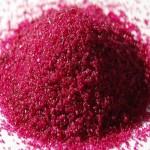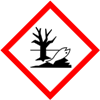Cobalt Chloride SDS of Suppliers Exporters, Manufacturers
Cobalt Chloride
CAS Number: -- Suppliers Exporters, Manufacturers

Please visit Main Page of Cobalt Chloride Manufacturers.
Cobalt Chloride SDS, Safety Data Sheet
MSDS Sheet 10-May-22
Section 1: Product and Company Identification
Product Name & Other Names: Cobalt Chloride hexahydrate, Cobaltous chloride hexahydrate.
CAS No.: 7791-13-1
EINECS, EC Number: 231-589-4
Relevant uses and uses advised against (if any): Laboratory chemicals, Manufacture of substances.
Supplier: As per letterhead.
Section 2: Hazards Identification
GHS, Globally Harmonized System Classification in accordance with 29 CFR 1910
Classification according to Regulation (EC) No 1272/2008
Acute toxicity, Oral (Category 4), H302
Respiratory sensitization (Category 1), H334
Skin sensitization (Category 1), H317
Eye irritation Category 2A, H319
Germ cell mutagenicity (Category 2), H341
Carcinogenicity, Inhalation (Category 1B), H350i
Reproductive toxicity (Category 1B), H360F
Acute aquatic toxicity (Category 1), H400
Chronic aquatic toxicity (Category 1), H410
Labeling according to GHS & Regulation (EC) No 1272/2008
GHS Label Elements  Irritant |
GHS Label Elements |
GHS Label Elements |
Signal Words: Danger
Hazard statements:
H302: Harmful if swallowed.
H317: May cause an allergic skin reaction.
H319: Causes serious eye irritation.
H334: May cause allergy or asthma symptoms or breathing difficulties if inhaled.
H341: Suspected of causing genetic defects.
H350i: May cause cancer by inhalation.
H360F: May damage fertility.
H410: Very toxic to aquatic life with long lasting effects.
Precautionary statements:
P202: Do not handle until all safety precautions have been read and understood.
P260: Do not breathe dust/fume/gas/mist/vapors/spray.
P261: Remove/Take off immediately all contaminated clothing.
P264: Wash thoroughly after handling.
P270: Do not eat, drink or smoke when using this product.
P271: Use only outdoors or in a well-ventilated area.
P273: Avoid release to the environment.
P280: Wear protective gloves/protective clothing/eye protection/face protection.
P285: In case of inadequate ventilation wear respiratory protection.
P362: Take off contaminated clothing and wash before reuse.
P330: Rinse mouth
P301+P312: IF SWALLOWED: Call a POISON CENTER or doctor/ physician if you feel unwell.
P302+P352: IF ON SKIN: Wash with plenty of soap and water.
P304+341: IF INHALED: If breathing is difficult, remove victim to fresh air and keep at rest in a position comfortable for breathing.
P305+P351+P338: IF IN EYES: Rinse cautiously with water for several minutes. Remove contact lenses, if present and easy to do. Continue rinsing.
P308+313: IF exposed or concerned: Get medical advice/attention.
P337+313: If eye irritation persists get medical advice/attention.
P333+313: If skin irritation or a rash occurs: Get medical advice/attention.
P342+311: If experiencing respiratory symptoms: Call a POISON CENTER or doctor/physician.
Section 3: Composition / Information on Ingredients
Product Name & Other Names: Cobalt Chloride hexahydrate, Cobaltous chloride hexahydrate.
CAS No.: 7791-13-1
EINECS, EC Number: 231-589-4
Section 4: First Aid Measures
Always seek medical attention after first aid measures are provided.
Eyes: Immediately flush eyes with excess water for 15 minutes, lifting lower and upper eyelids occasionally.
Skin: Immediately flush skin with excess water for 15 minutes while removing contaminated clothing.
Ingestion: Call Emergency Medical immediately. Rinse mouth with cold water. Give victim 1-2 cups of water or milk to drink. Induce vomiting immediately.
Inhalation: Remove to fresh air. If not breathing, give artificial respiration.
Section 5: Fire Fighting Measures
It is non-flammable solid. When heated to decomposition, emits acrid fumes.
Protective equipment and precautions for firefighters: Use foam or dry chemical to extinguish fire. Firefighters should wear full firefighting turn-out gear and respiratory protection. Cool container with water spray. Material is not sensitive to impact or static discharge.
Special hazards arising from the substance: Hydrogen chloride gas, Cobalt/cobalt oxides.
Extinguishing Media Not recommended: Avoid using solid water jet as it may scatter the fire.
Special Information: In the event of a fire, wear full protective clothing and NIOSH-approved self-contained breathing apparatus with full face piece operated in the pressure demand or other positive pressure mode. At elevated temperatures under fire conditions, it may produce toxic or irritating fumes. Fire-extinguishing work is done from the windward and the suitable fire-extinguishing method according to the surrounding situation is used. Uninvolved persons should evacuate to a safe place.
Section 6: Accidental Release Measures
Personal precautions, protective equipment, and emergency procedures: Ventilate area of leak or spill. Avoid breathing dust/fumes/gas/mist/vapors/spray. Use individual protective equipment (waterproof boots, suitable protective clothing, safety glasses, etc.). Do not approach facing the wind.
Environmental precautions: Do not let the product enter drains, soil, or water sources.
Methods and materials used for containment cleanup procedures and Storage: Contain spilled material. Cover with an inert, non-combustible absorbent material, (e.g., sand, earth, diatomaceous earth, vermiculite). Vacuum or sweep-up and remove to an approved disposal container. Finish cleaning by spreading water on the contaminated surface and allow to evacuate as per law.
Section 7: Handling and Storage
Precautions for safe handling: Apply according to good manufacturing and industrial hygiene practices. Ensure proper ventilation. In case of insufficient ventilation, wear suitable respiratory equipment. Wash thoroughly after handling. Do not drink, eat, or smoke while handling. Avoid contact with skin, eyes, and clothing. Minimize dust generation. Avoid breathing dust/fumes/gas/mist/vapors/spray. Use individual protective equipment (waterproof boots, suitable protective clothing, safety glasses, etc.). Prevent any contact with hot surfaces.
Conditions for safe storage, including any incompatibilities: Store in cool, dry, and ventilated area away from heat sources and protected from sunlight in tightly closed original container. Keep air contact to a minimum. Store protected from heat, sparks and ignition sources and incompatible materials. Do not store with incompatible materials like strong oxidizing agents.
Section 8: Exposure Controls / Personal Protection
Exposure guidelines: ACGIH: TLV: 0.2 mg/m3, STEL: Not Available.
Ventilation System: A system of local and/or general exhaust is recommended to keep employee exposures as low as possible.
Personal Respirators (NIOSH Approved): For conditions of use where exposure to dust or mist is apparent and engineering controls are not feasible, a particulate respirator may be worn. For emergencies or instances where the exposure levels are not known, use a full-face positive-pressure, air-supplied respirator.
Skin Protection: Wear protective gloves and clean body-covering clothing.
Eye Protection: Use chemical safety goggles and/or full-face shield where dusting or splashing of solutions is possible. Maintain eye wash fountain and quick-drench facilities in work area.
Other Control Measures: Maintain good housekeeping in work area. Handle in accordance with good industrial hygiene and safety practice. Have approved eyewash facility, safety shower, and fire extinguishers readily available.
Section 9: Physical and Chemical Properties
Physical state and appearance: Solid. (Crystals or Powder.)
Odor: Odorless.
Molecular Weight: 237.93
Chemical Formula: CrCl3-6H2O
Color: Bluish Red.
pH (1% solution/water): 4.5 to 5.5.
Boiling Point: 1049C
Melting Point: 735C
Critical Temperature: No data found.
Specific Gravity: Density: 1.9 @ 25 deg. C (Water = 1)
Vapor Pressure: No data found.
Vapor Density: No data found.
Volatility: No data found.
Odor Threshold: No data found.
Water/Oil Dist. Coeff.: No data found.
Ionicity (in Water): No data found.
Dispersion Properties: No data found.
Solubility: Soluble in water.
Molecular Weight: 237.93
Chemical Formula: CoCl2-6H2O
Section 10: Stability and Reactivity
Avoid heat and ignition sources.
Stability: Stable under normal conditions of use and storage.
Incompatibility: Heat and strong oxidizing agents.
Shelf life: Indefinite if stored properly.
Hazardous Decomposition Products: Hydrogen chloride, cobalt/cobalt oxides.
Hazardous Polymerization: Has not been reported.
Section 11: Toxicology Information
Cobalt Chloride:
LD50 [oral, rat]; 586 mg/kg; LC50 [rat]; N/A; LD50 Dermal [rabbit]; N/A
May affect genetic material (mutagenic). Presumed human reproductive toxicant.
Carcinogenicity: Group 2B: Possibly carcinogenic to humans by IARC. A3 - Animal Carcinogen by ACGIH
Material is extremely destructive to tissue of the mucous membranes and upper respiratory tract, eyes, and skin.
Developmental Toxicity: Suspected of causing genetic defects.
Reproductive Effects: May damage fertility.
Section 12: Ecological Information
Toxicity to fish: LC50 - Cyprinus carpio (Carp) - 0.33 mg/l - 96.0 h
Toxicity to daphnia and other aquatic invertebrates: EC50 - Daphnia magna (Water flea): 1.1 - 1.6 mg/l - 48 h
Toxicity to algae EC50 - Chlorella vulgaris (Fresh water algae) - 0.5 mg/l - 96 h
Ecotoxicity (aquatic and terrestrial): Contains a heavy metal – toxic to terrestrial and aquatic plants and animals. Do not release to environment.
Results of PBT and vPvB assessment: This substance/mixture contains no components considered to be either persistent, bioaccumulative and toxic (PBT), or very persistent and very bioaccumulative (vPvB) at levels of 0.1% or higher.
Section 13: Disposal Considerations
Check with all applicable local, regional, and national laws and regulations.
Section 14: Transport Information
DOT USA and ADR/RID Europe:
UN-No: UN3077
Proper Shipping Name: ENVIRONMENTALLY HAZARDOUS SUBSTANCE, SOLID, N.O.S.
Proper technical name: Cobalt(II) chloride
Hazard Class: 9; Packing Group: III
TDG Canada:
UN-No: UN3077
Proper Shipping Name: ENVIRONMENTALLY HAZARDOUS SUBSTANCE, SOLID, N.O.S.
Hazard Class: 9; Packing Group: III
ICAO/IATA
UN-No: UN3077
Proper Shipping Name: ENVIRONMENTALLY HAZARDOUS SUBSTANCE, SOLID, N.O.S.
Hazard Class: 9; Packing Group: III
IMDG/IMO
UN-No: UN3077
Proper Shipping Name: ENVIRONMENTALLY HAZARDOUS SUBSTANCE, SOLID, N.O.S.
Hazard Class: 9; Packing Group: III.
Section 15: Regulatory Information
USA:
SARA 311/312 Hazard Categories: See section 2.
California Proposition 65: Not listed.
Section 16: Other Information
DISCLAIMER: The information and recommendations set forth herein are presented in good faith and believed correct as of the date hereof. It is compiled from various sources, and it is not necessarily all inclusive nor fully adequate in every circumstance. In addition, these suggestions should not be confused with nor followed in violation of applicable laws, regulations, rules, or insurance requirements applicable. This MSDS sheet is intended only as a guide to the appropriate precautionary handling of the material by a professionally trained person using this product. Individuals receiving the information must exercise their independent judgment in determining its appropriateness for a particular purpose.Please visit Technical Data Sheet of Cobalt Chloride Suppliers.
Cobalt Acetate CAS Number -- & Cobalt Chloride CAS Number -- Supplier Exporter, Manufacturer:
Annie Chemie P Ltd
Mumbai 4000010, INDIA
With Agents and offices in UAE, USA, Europe.
e-mail: info@anniechemie.com
Copyright and Usual Disclaimer is Applicable.
May 31, 2025
Exporters to USA, Canada, UK, Europe, UAE, Nigeria, Algeria, Turkey, Mexico, Brazil, Chile, Argentina, Australia, Dubai etc.
Perfection is made up of small things and that is a big thing.


